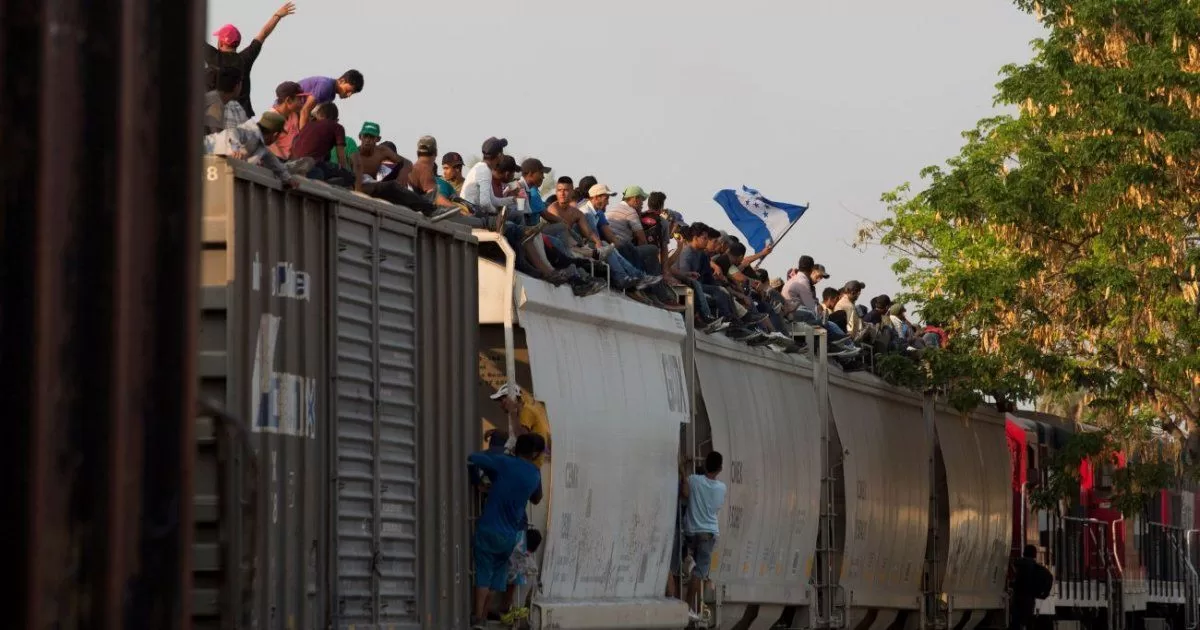MEXICO CITY – Mexico plans to expand its passenger rail network northward with new lines connecting Mexico City to the U.S. border, potentially encouraging illegal immigration crossings.
The project also plans to expand the network to Guadalajara, the second largest city in the country.
Future president Claudia Sheinbaum said Wednesday that three new rail lines are planned that, in principle, will take advantage of the current right-of-way for freight trains with the aim of building parallel tracks for electric passenger trains that can travel at a speed of up to 160 kilometers per hour and that would presumably run confined, that is, between walls.
“Our goal is trains similar to the Maya Train to the north,” Sheinbaum said.
Critics of the project say the projected costs of $26 billion may be unrealistic, taking as a reference the Maya Train, which has been greatly over-budget, reaching more than $30 billion without even being completed. They fear that such an extensive expansion could result in even greater expenses and increase the country’s already worrying fiscal deficit.
In addition, there is the possible increase in immigration to the United States. Improved rail infrastructure and connectivity with border cities could facilitate migration movements, intensifying the migration crisis and diplomatic tensions with our northern neighbor.
Like the Mayan Train, the construction of new railway lines could cause a negative impact on the environment and not guarantee the expected economic returns. The recent history of unfinished railway projects, such as the train to Toluca and the train to the Felipe Ángeles airport, reinforces these concerns.
Planned route
Hours before Sheinbaum’s comments, the current president outlined his successor’s plans and said that during the next six-year term, 3,000 km of passenger trains would be built, double the number he had planned during his term.
One of the lines will run from Mexico City to Querétaro, San Luis Potosí, Monterrey —the industrial capital of Mexico— and end in Nuevo Laredo, a city on the border with Texas, a journey of more than 1,100 kilometers.
According to Sheinbaum, another line would go from Querétaro to Guanajuato until reaching Guadalajara and, potentially, could be extended along the Pacific coast to Nogales, on the border with Arizona, although Sheinbaum considered that it is possible that this second section cannot be developed during her administration that will begin on October 1 and end in 2030.
López Obrador, however, was more ambitious in his plans and spoke of even going beyond Nogales to Mexicali and Tijuana, border cities with California, and of another line that would connect Mexico City with Ciudad Juárez, neighboring El Paso, Texas, routes about which his successor did not comment.
The third line that Sheinbaum did mention would extend the section currently under construction to connect the capital with the Felipe Ángeles airport until reaching Pachuca, 90 kilometers north of Mexico City.
Sheinbaum explained that she is analyzing the right-of-way status of all the new sections to be built in order to negotiate with the current concessionaires, who would maintain their cargo services, and to be able to carry out the tenders for the new works as soon as her government begins.
“The goal is to connect our country by maintaining freight trains, which have enormous potential… and what that means is the creation of jobs linked to public works that boost private investment,” said the future president.
Sheinbaum had already announced that the Armed Forces will continue to be involved in the development of all these projects and that her goal is to have the new trains built in Mexico as well.
Source: Written with information from AP

